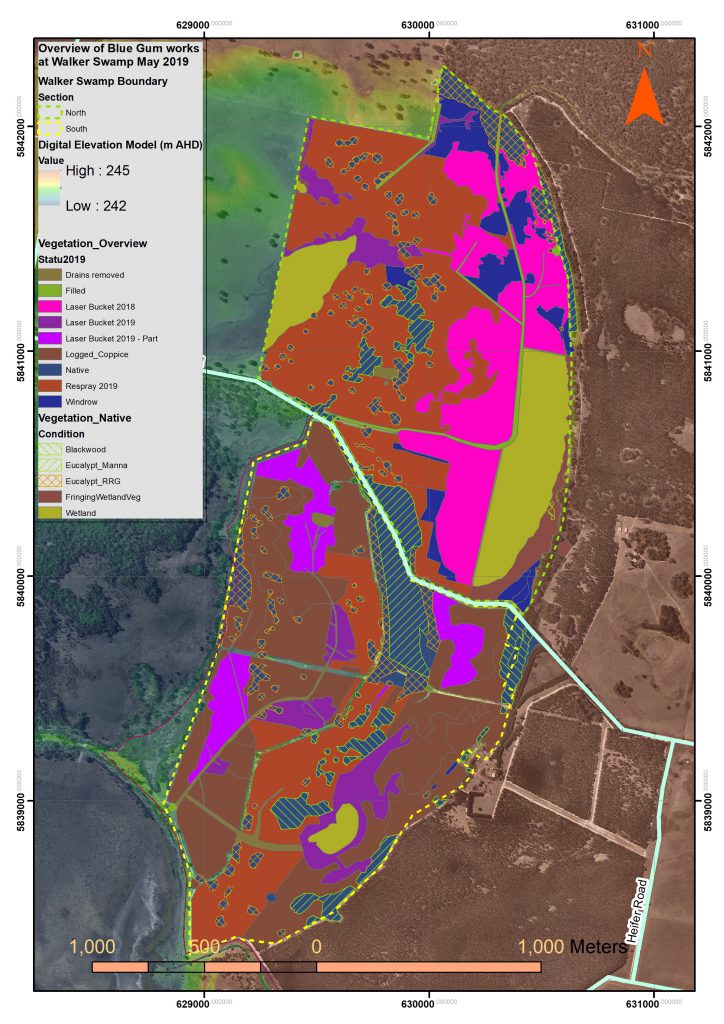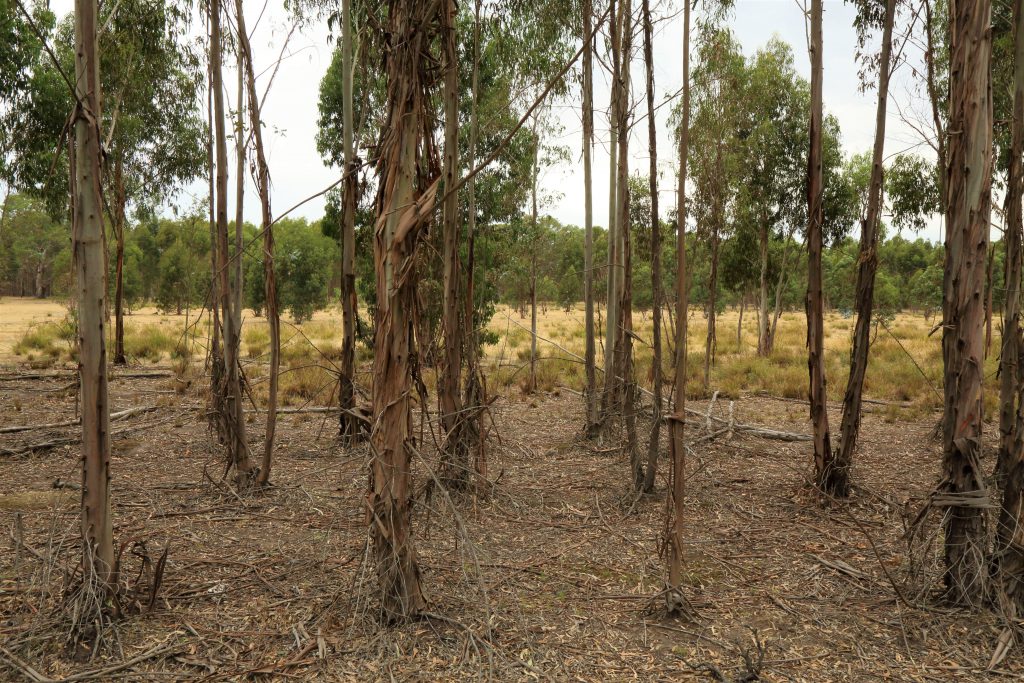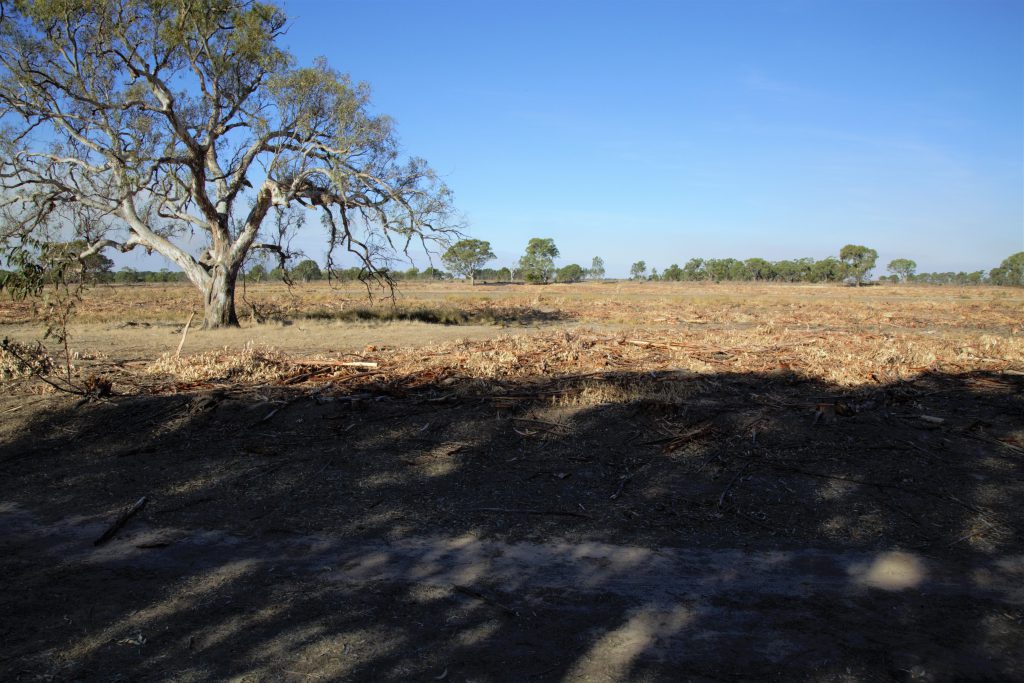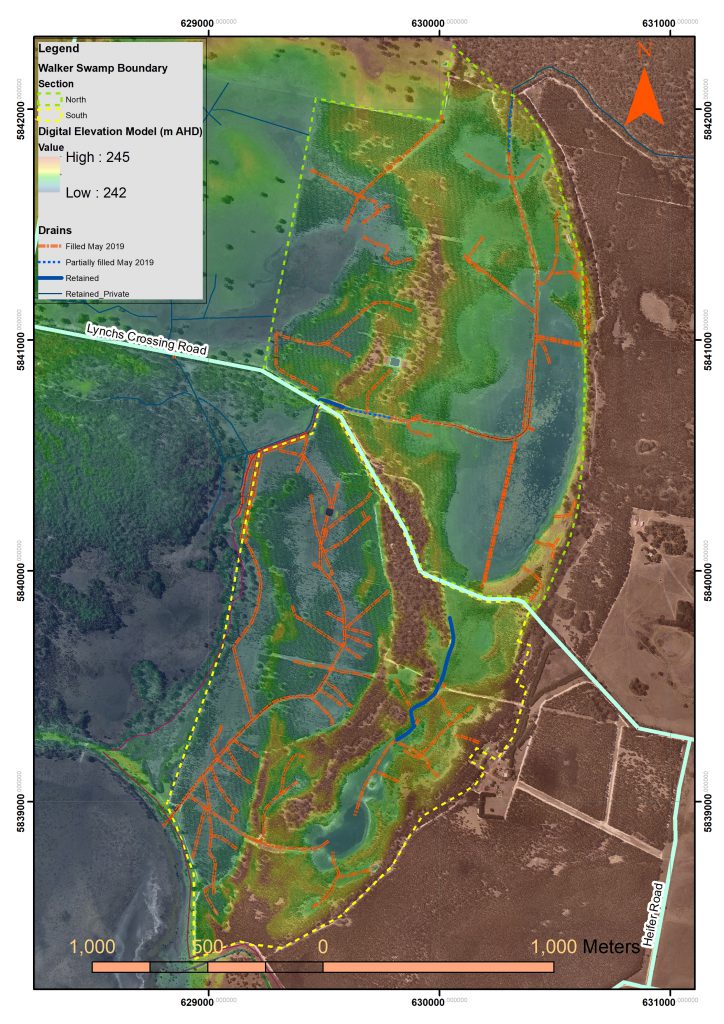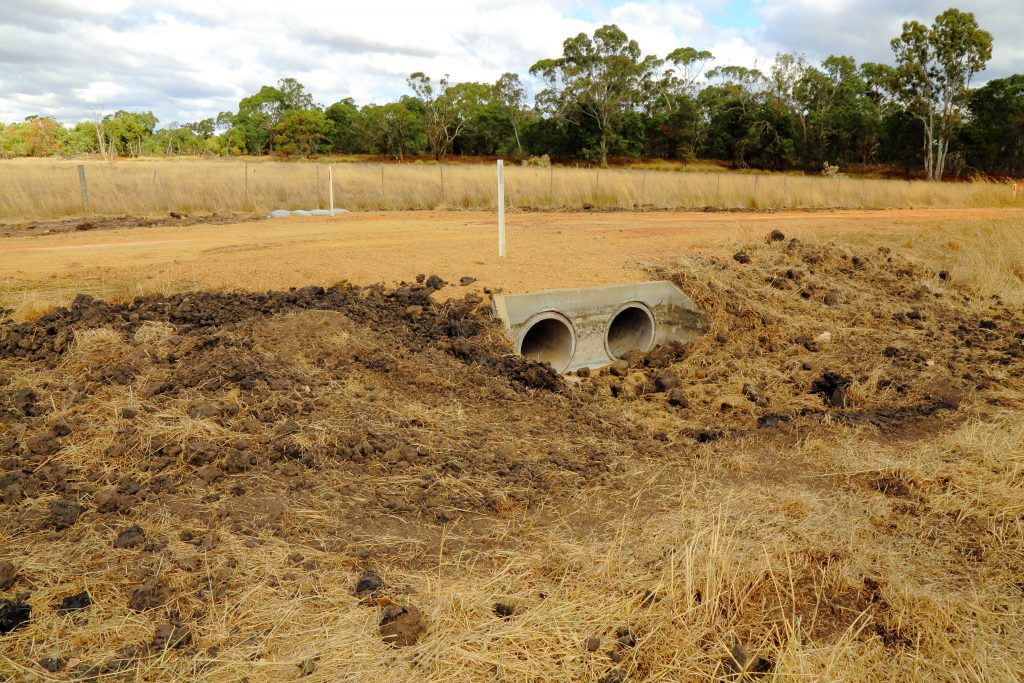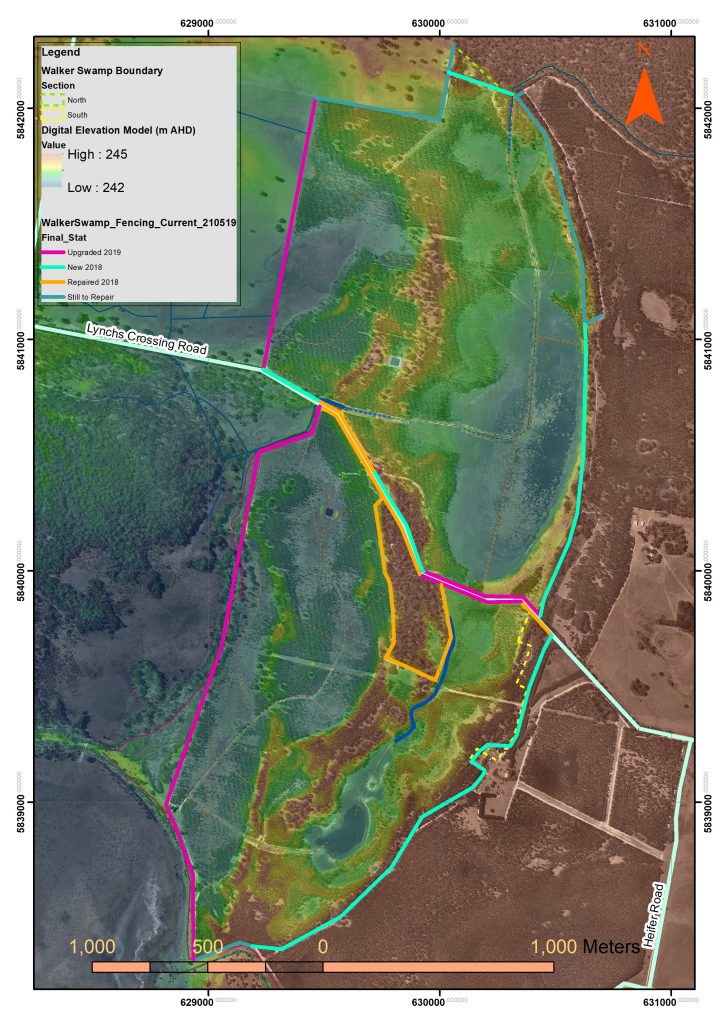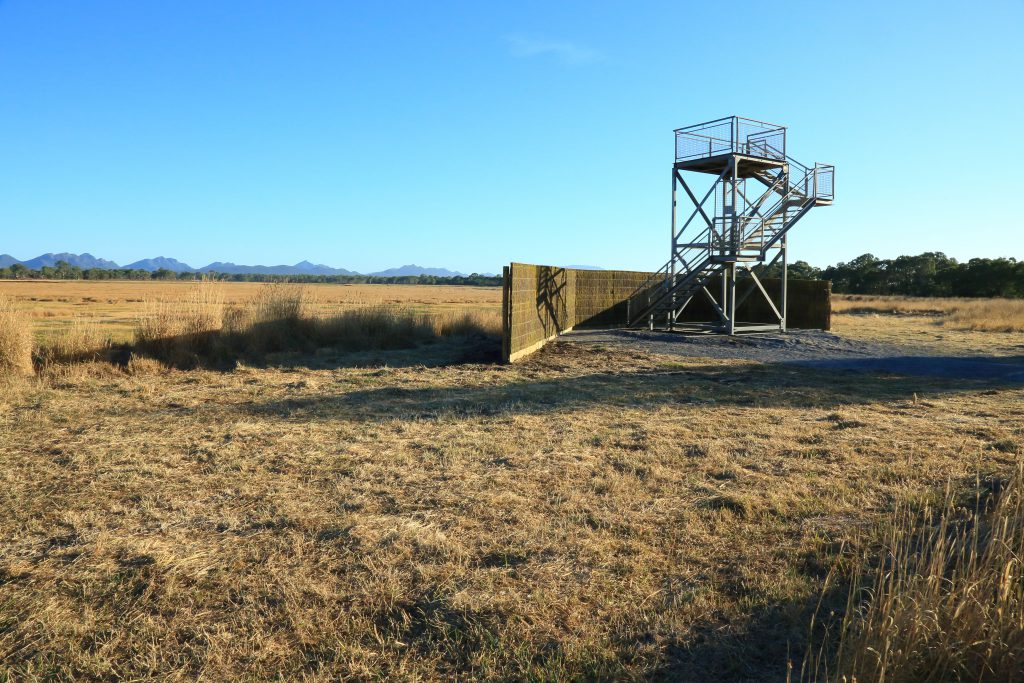A wetland transformed in 15 months – now to “just add water” …
It has brought much joy, and I have had such fun, during the busy months of transformation across the Walker Swamp Restoration Reserve (WSRR); the changes in the last fifteen months have to be seen to be believed! Positive environmental changes usually take a long time. To make such significant steps forward in such a short time has transformed our understanding of what is possible when restoring wetland landscapes. It would be impossible to describe all the steps and effort is has taken for this to take place, but I invite you to read about some of the key milestones that have occurred below.

Removing mounding in wetland beds
Over 90 hectares of furrows and mounds from areas of failed Blue Gum plantation (in the heaviest wetland soils) have been removed (Figure 1). Innovative use of a laser bucket supported by a grader has minimised damage to the wetland vegetation. The rapid recovery achieved in the partially restored basin of Walker Swamp, provided a remarkable transformation in 2018 (see photo above). It gives us a lot to look forward to with the works completed in 2019!
Removing Blue Gums and treating coppicing stumps
As any visitors to the property know, the previous forestry plantation land-use was very much evident in the landscape. Many areas of uneconomic plantations were left behind when the property was commercially harvested in 2016 and 2017. We have used a few different methods to deal with this legacy:
- Almost 20 hectares of small, isolated Blue Gum patches in the Stage 1 area were mechanically removed, and heaped for burning.
- Another 120 hectares of coppicing Blue Gum stumps were treated last year across Stage 1 and 2. About 5% resprouted, and we are very grateful to the Landmate group from Ararat Prison who have walked every row of coppicing Blue Gum across the wetland complex to spray the survivors; an estimated 240 km of walking!
- Also, thanks to the assistance of SFM Forest Products (and their contractors), just over 90 hectares of remaining poor quality standing Blue Gum plantations in the Stage 2 area were logged and removed this autumn, rather than being heaped and burned, for a much better environmental outcome. This has opened remarkable vistas across the wetland (compare Figures 2 and 3 below).
Over 100 hectares of scattered remnant River Red Gum, Rough Barked Manna Gum and Blackwood trees have now been revealed, along with Sand Forest habitat on the lunette bank that runs north-south through the centre of the WSRR.
Back-filling the artificial drains
As of autumn 2019, NGT has restored the floodplain landscape to retain significant areas of water on the property, with works informed by and based upon a Hydrological Study completed earlier this year (funded by the Glenelg Hopkins CMA).
The 26 km of drains across the wetlands (Figure 4) were challenging to remove, especially where the drains went through the Blue Gum stumps. A combination of laser bucket, grader and excavator, and a whole lot of team work, have significantly improved the prospects of future natural water movement and retention. When the water arrives, we should witness immediate recovery of wetland function. Water can now only leave via seepage to groundwater or evaporation or, when full, via the regulator on the edge of Walker Swamp.
The large seasonally inundated area of Red Gum grassy woodland will now provide a highly productive shallow wetland zone, and a carbon source for the wetland food web. It is anticipated that Walker Swamp will hold water well into autumn in many years, providing important summer and drought refuge for birds and other fauna.
The photographic record shows the incredible transformations as a result of this recent work (Figures 5-7).



The construction of the new regulator, and backfilling of the Bunnugal drain outlet, show the new sill level (Figure 8), and gives some idea of how large Walker Swamp will be when it fills. Two levees have also been raised and another has been removed.
Road Upgrade
Culverts have been installed under an upgraded Lynchs Crossing Road (Figure 9), with the road raised by 50 cm to accommodate the higher static water level and facilitate movement of water south from Walker Swamp into the southern wetlands.
Fixing the fencing
Upgrading the perimeter fence around the WSRR has been a real challenge. We built nearly 8 km of new fence last year and upgraded 5 km of fence in poor condition (Figure 10).
The fencing was greatly assisted by the skilled assistance and hard work from many volunteers, and the Ararat Prison Landmate program.
Preparing for our future guests…
Finally, a new car park and walking path, a bird hide fence, and 5 metre high bird-watching tower have been installed to enable us to manage public access to the wetlands in the future. Native plant species have been propagated and planted on site, along with fencing and information signs to create a great visitor experience (Figure 11).
Our upcoming on-site celebration in the spring will mark the completion of this component of the project.
The next stage in the restoration of diversity and productivity across the WSRR is to look at our options for restoring terrestrial vegetation on the site.
… just add water!
In the meantime, we eagerly await the arrival of the winter rains and flows into Walker Swamp – in readiness to share with you this spring and complete the picture (send it down Hughie).
This project has only been made possible thanks to partnerships with, and grants provided, by:
- Glenelg Hopkins CMA and Victorian Government – DELWP (Our Catchments, Our Communities Program)
- Victorian Government – DELWP (Virtual Centre for Climate Change Innovation)
- Australian Government (National Landcare Program)

